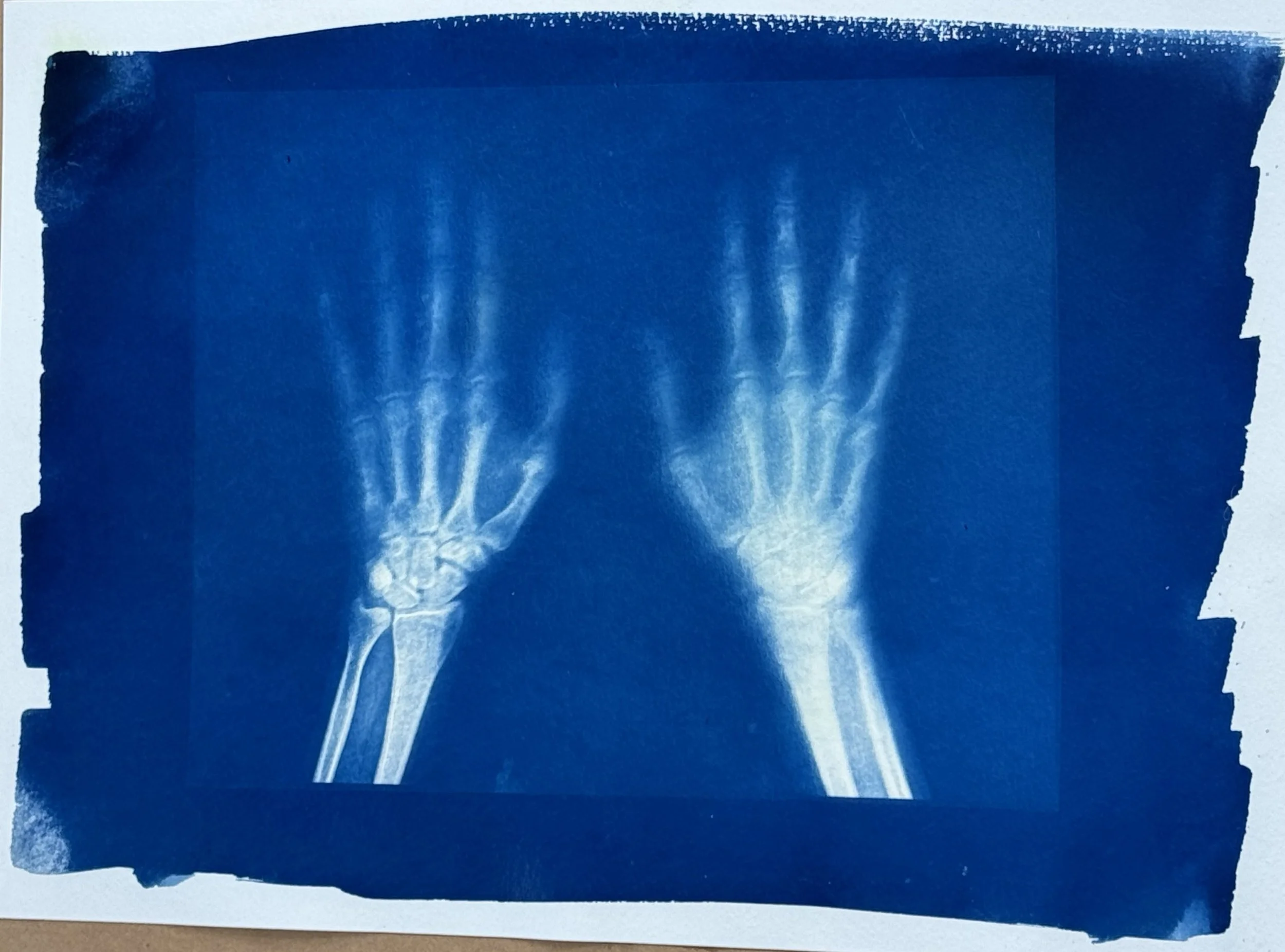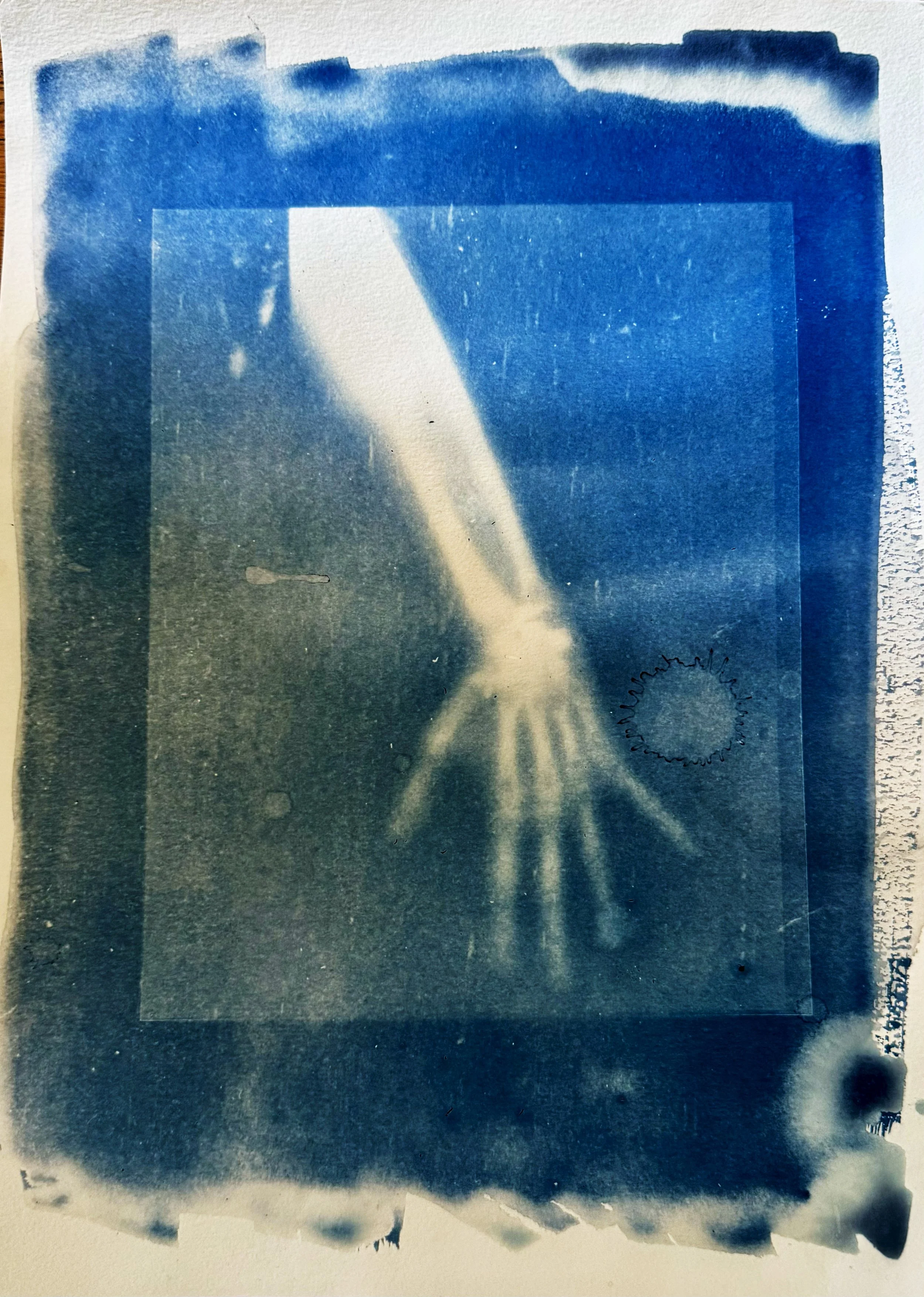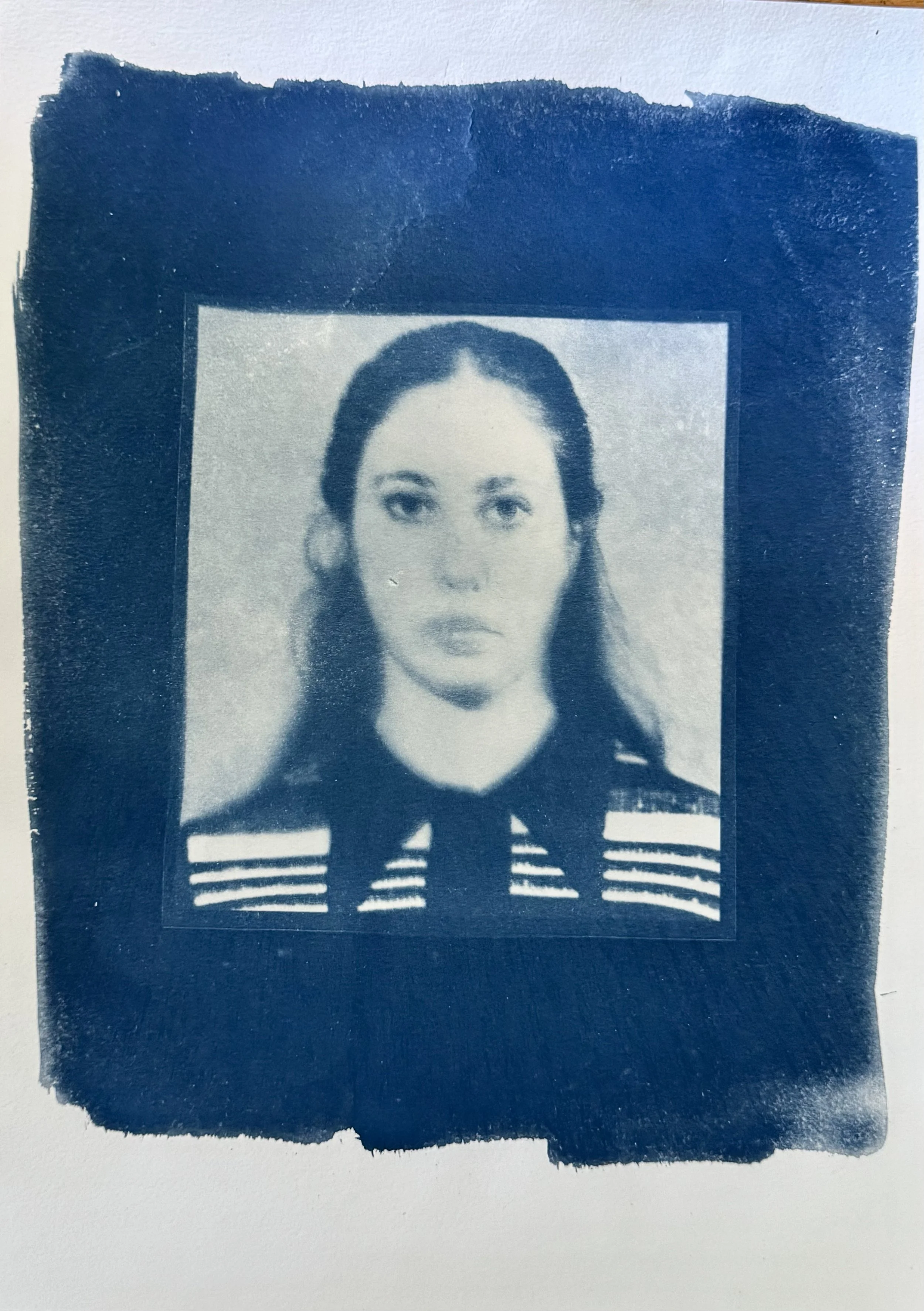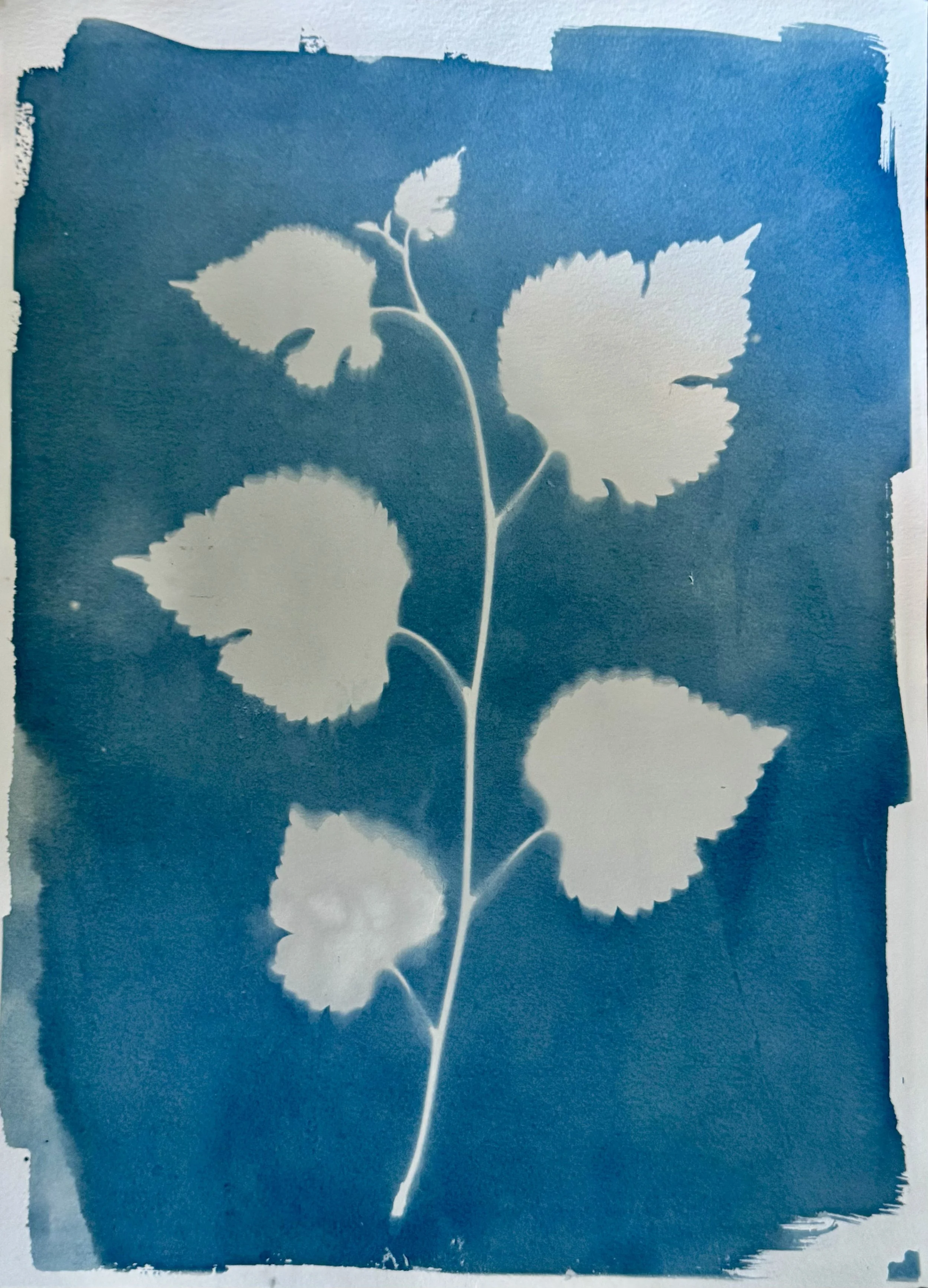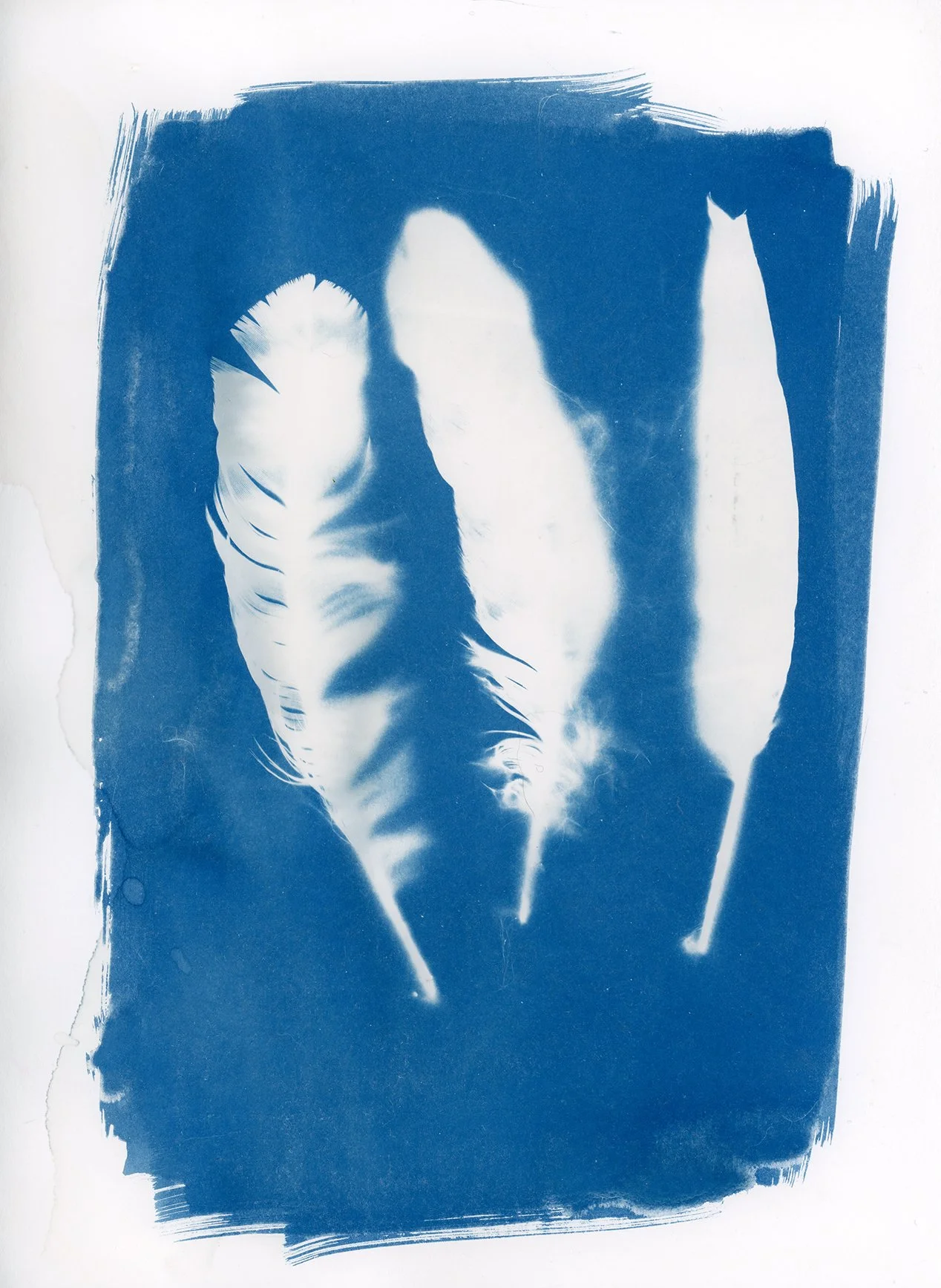Cyanotypes are one of the earliest photographic printing processes, invented in 1842 by Sir John Herschel, a British scientist and astronomer. The process is known for producing prints in a rich Prussian blue color. The first major artistic and scientific use came from Anna Atkins, an English botanist and photographer. In 1843, she published Photographs of British Algae: Cyanotype Impressions, considered the first book illustrated with photographic images. Atkins used cyanotypes to record delicate botanical specimens like algae, ferns, and flowers—her work combined science and art.
My Cyanotype project emerges from what I call my blue period, a body of work shaped by the grief of my mother’s death. Using the materials she left behind, her personal objects, I print cyanotypes of her image and her objects, transforming remnants of her life into lasting impressions. This process is both an act of preservation and self-discovery: a way of keeping her memory alive while navigating my own shifting identity in the aftermath of loss.


